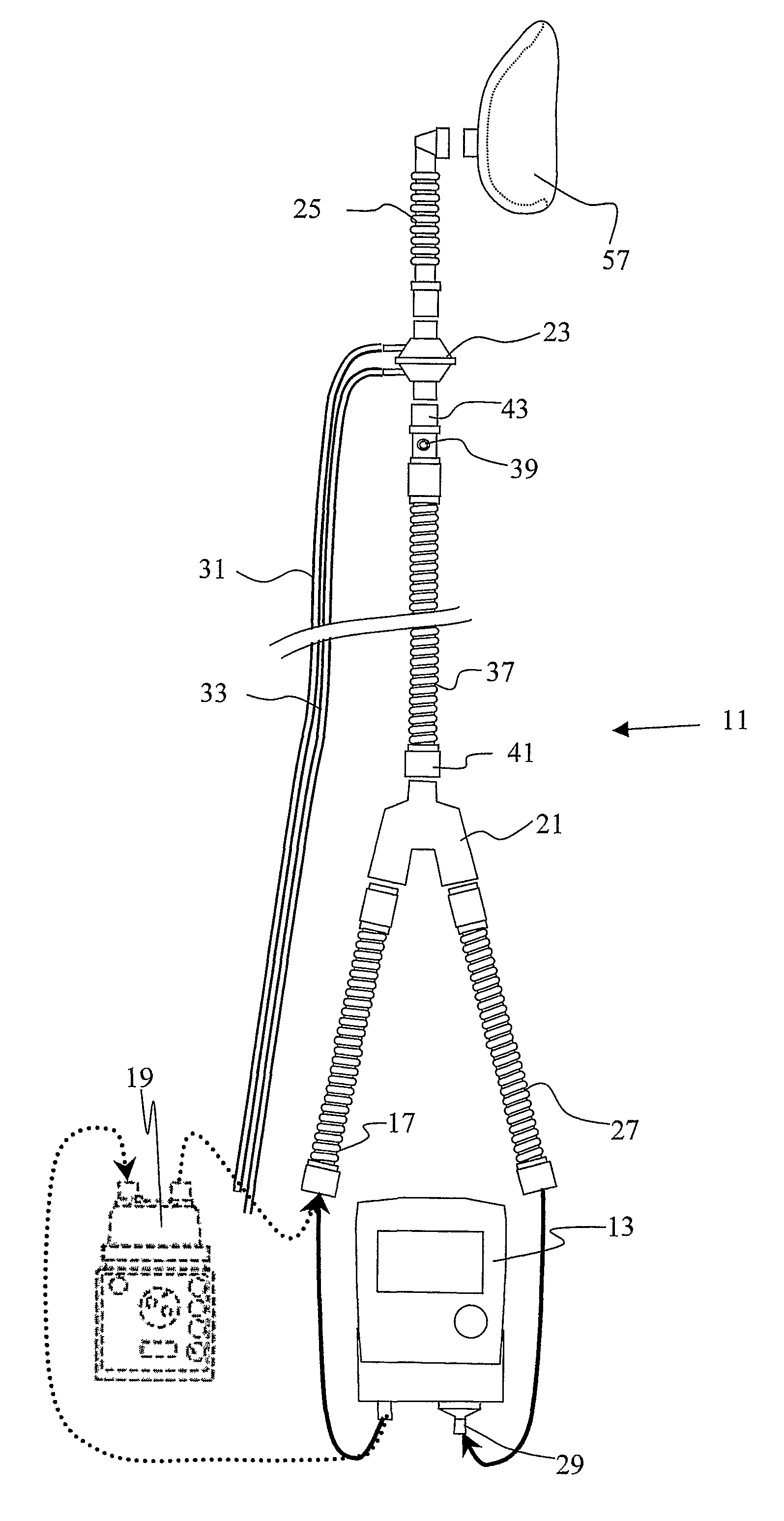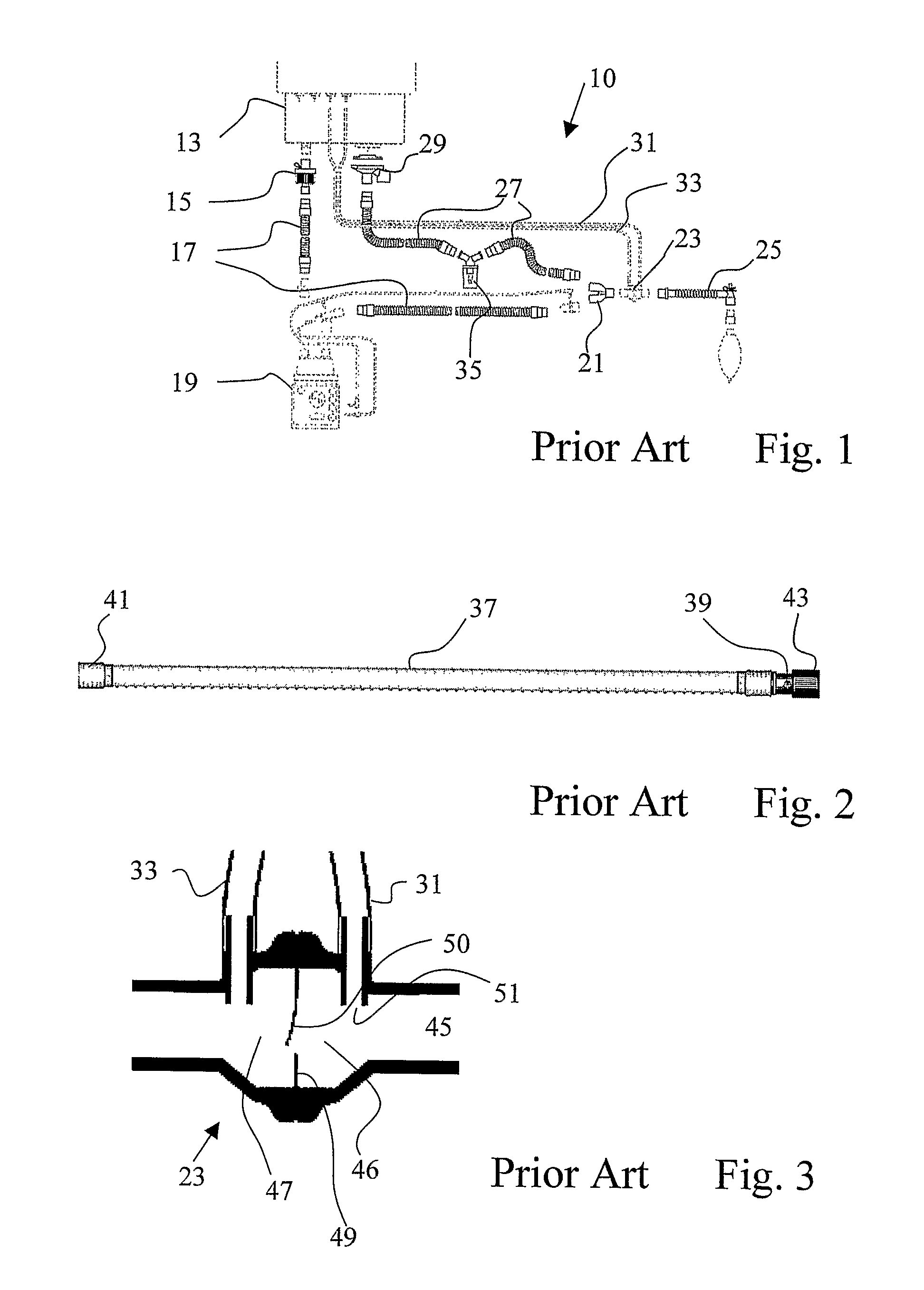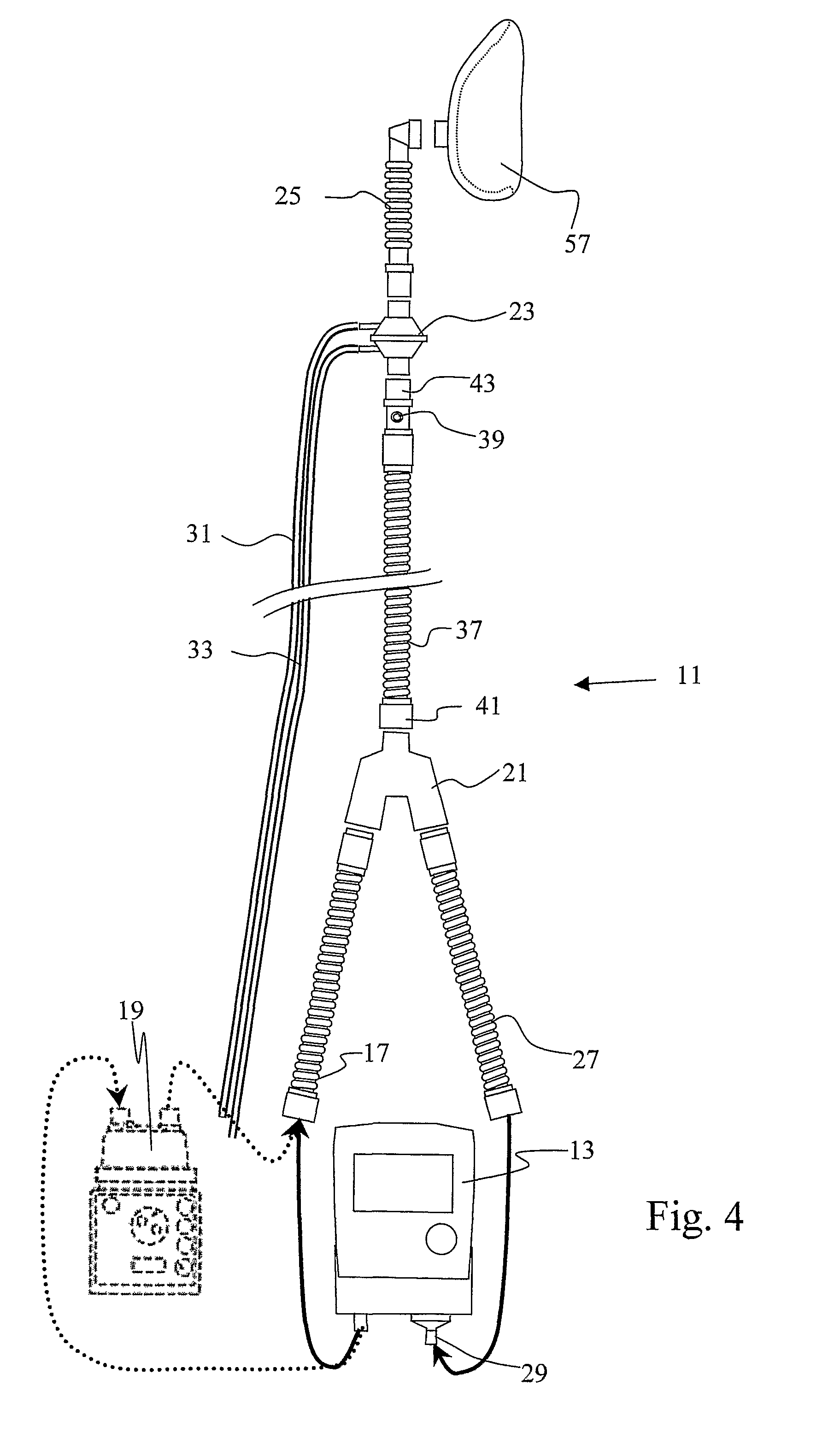Tube system for ventilation appliances
a technology of ventilation appliances and tubes, applied in mechanical equipment, valves, respirators, etc., can solve the problem of deemed impossible to connect one tube of a single tube system to a device for a dual tube system
- Summary
- Abstract
- Description
- Claims
- Application Information
AI Technical Summary
Benefits of technology
Problems solved by technology
Method used
Image
Examples
Embodiment Construction
Prior Art
[0029]As described above, prior art includes single tube systems and dual tube systems. The known dual tube system illustrated in FIG. 1 is suitable and configured for invasive ventilation. This dual tube system is therefore to be connected to a ventilation appliance 13 that is suitable for the invasive ventilation. Such an invasive ventilation appliance 13 has two actively controlled valves, namely the inhalation valve (not illustrated, as it is arranged in the interior of the appliance), and the exhalation valve 29. An inhalation tube kit 17 connected to an appliance outlet via a filter 15, and an exhalation tube kit 29 connected to the exhalation valve 29, are connected to a Y piece 21 on their ends facing away from the ventilation appliance 13. The Y piece 21 gathers the two tubes 17 and 27, and combines the same to a single tube 25 leading to the patient. A flow sensor 23 is arranged on the Y piece on the patient side. The flow sensor 23 is connected to the ventilation...
PUM
 Login to View More
Login to View More Abstract
Description
Claims
Application Information
 Login to View More
Login to View More - Generate Ideas
- Intellectual Property
- Life Sciences
- Materials
- Tech Scout
- Unparalleled Data Quality
- Higher Quality Content
- 60% Fewer Hallucinations
Browse by: Latest US Patents, China's latest patents, Technical Efficacy Thesaurus, Application Domain, Technology Topic, Popular Technical Reports.
© 2025 PatSnap. All rights reserved.Legal|Privacy policy|Modern Slavery Act Transparency Statement|Sitemap|About US| Contact US: help@patsnap.com



